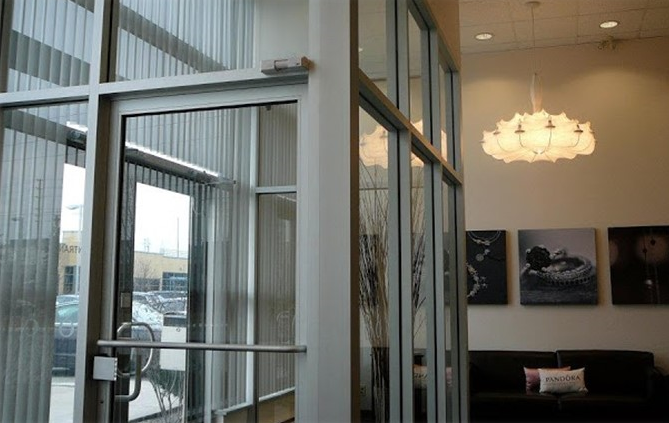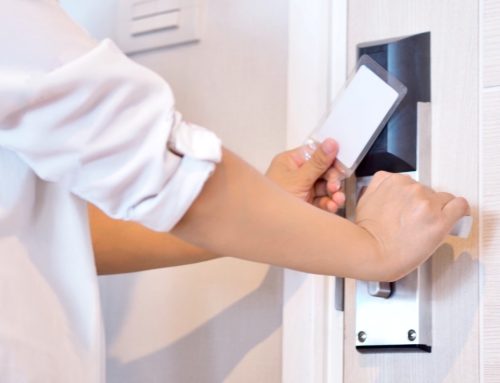Identification cards, keypads, software, databases, and even the doors themselves are all part of keeping employees safe in a facility and keeping unwanted visitors out.
But there also is technology that is increasingly being used by many enterprises – door interlock systems, which are two doors (or more) that are electronically connected so a person cannot open one door until the other has closed. Door interlock systems are a high-level solution for entrance control and access management for numerous types of organizations.
There are multiple applications and industries that can benefit from door interlock systems. These include casinos, armored car facilities, prisons and police stations, medical and pharmaceutical manufacturing facilities, secure government and military R&D sites, high-risk retail such as jewelry stores, check cashing facilities, schools and laboratories. For security integrators, the opportunities are endless for a solid revenue stream and new customers.
How do you get started? Here are 6 best practices for selecting and installing door interlock solutions.
- Know the types of door interlock systems available. Door interlock systems have different names based on their functionality, and are commonly referred to as one of the following: Interlocks, Mantraps, Sally Ports (for vehicles) Secured Vestibules, and Air Locks. With a door interlock and a mantrap, an individual is granted access through a door to enter an area. Once the first door is closed, a second door can then be opened automatically or triggered by an operator. Sally Ports are interlock systems used to control vehicle entry/egress using garage doors, gates or bollards. Secured vestibules are rooms that guard against electronic surveillance and data leakage. Air Locks are systems with numerous interconnected doors. Opening any door will lock the related doors so that only one door, in a designated area, can be accessed at a time.
- Determine your customer’s goals. Is the user trying to protect assets and people, control pedestrian traffic, or both? What threats are they trying to mitigate? More than likely, you will need to help them select a system that is appropriate based on all factors. Door interlocks are also available with different modes of functionality, such as intercom communications, biometrics, or fingerprints. Does your customer want the system to be discreet? Will a security guard operate it? These are examples of questions that need to be asked.
- Understand your customer’s security requirements. For example, Air Lock Control Systems are lower-security systems frequently used for environmental control. All of the doors are typically unlocked, and access is controlled with traffic lights, in this scenario two or more doors can often be opened simultaneously. A Secure Entry/Free Egress system provides a more secure entrance solution, as a valid access card will unlock the exterior door only if the interior door is closed. Unlocking the exterior door will lock the interior door. Once the exterior door is re-secured, the interior door is unlocked to allow access. The highest security is provided with a Restricted Entry & Exit System, whereby a door is unlocked by a request for access only if no other related doors are unsecured.
- Select the proper interlock controller. A critical consideration when choosing a door interlock system is the proper interlock controller. You should understand the number of doors, types of doors and other monitored and/or controlled devices within the facility. There are numerous types of interlock controllers for facilities with as few as two doors or over 100, with features such as emergency door release inputs, panic release, adjustable timers, emergency release unlock, and more.
- Have knowledge of industry standards and building codes. Door interlock systems are often subject to specific building code requirements, and here, your knowledge can help the user to select the right solution. For example, some municipalities may not allow any doors in a public facility to be locked at any time. Another example is a clean room, where door interlock systems may need to comply with Federal Standard 209E, also known as ISO14644. Even more, life safety codes may require that the door interlock systems be integrated with a facility’s fire alarm control panel to allow emergency egress. A local emergency pull station may be required to allow doors to be unlocked in non-fire alarm emergencies or to interface the system with NFPA 101 delayed egress controls.
- Understand installation guidelines. These procedures will differ from facility to facility, but local building inspectors should always be consulted before installation of a door interlock locking system to help ensure compliance. For example, there are situations where any locks restricting an exit are not permitted, and where only traffic lights may be deployed to indicate when entry or exit is permitted.
Choosing a door control system for a facility is of the utmost importance for any security executive, in order to ensure the safety and security of people, property and assets. A door interlock system can provide a highly efficient and effective solution for any security challenge.





